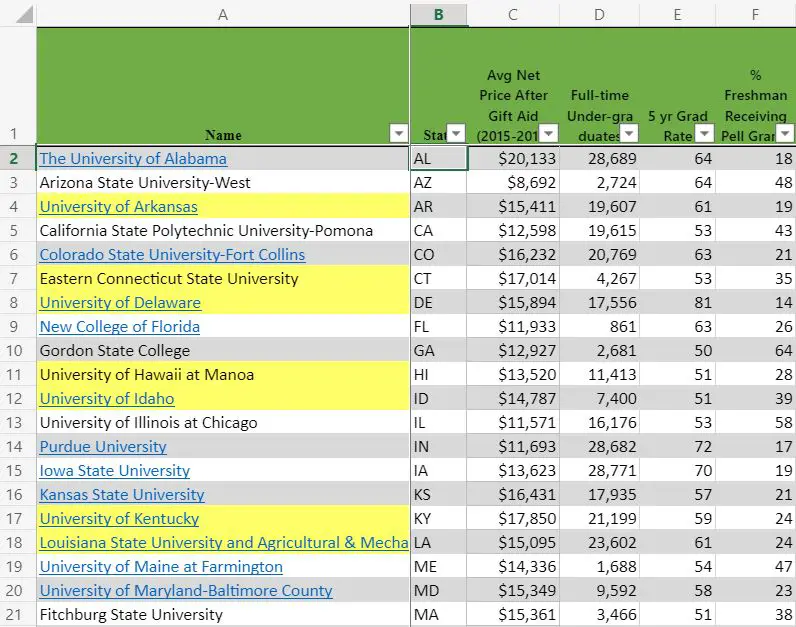 One factor that will determine how much you pay for college is location. I’ve talked before about how students who insist only on schools in the northeast or on the coasts will pay for the privilege. Geography can actually be a hook depending on the location of the college and the student. Here, I’m going to cover how location can affect how much you pay to attend a public university.
One factor that will determine how much you pay for college is location. I’ve talked before about how students who insist only on schools in the northeast or on the coasts will pay for the privilege. Geography can actually be a hook depending on the location of the college and the student. Here, I’m going to cover how location can affect how much you pay to attend a public university.
Let’s be clear, this isn’t about attending a public university as an out-of-state student. I’m talking about how much you will pay to attend your in-state college options. For the vast majority of people, this will be your cheapest option. However, location will still affect how much you pay.
Some State Universities are Cheaper than Others
The fact is that there is a great deal of variation in how much it costs state residents to attend their public universities. Among the public schools that meet the 50-50 requirements, the total cost of attendance ranges from a low of $17,076 in Georgia to a high of $36,498 in Pennsylvania. Students in Pennsylvania can pay twice as much to attend their public university as in Georgia!
Of course, as my long time blog readers will know, college tuition is a lot like airline prices, hardly anyone pays full price. Therefore, you need to consider average net price to get a better idea of what families are paying. The 50-50 public university with the lowest average net price is the University of Washington-Tacoma Campus which had an average net price of $8,539. The highest was Pennsylvania State University with an average net price of $25,055. We’re still talking about schools in certain states costing almost three times as much as those in others.
Differences within the State
There can be pretty big differences within the state as well. In Pennsylvania, there is almost an $12,000 difference between the lowest and highest average net price among 50-50 public universities. Virginia, Arizona, New Hampshire, and New Jersey all had differences of over $7,000.
Be sure to keep in mind that I’m talking about 50-50 schools. This means that in 15 states there is actually only one public university that meets the qualification so there aren’t any differences to considered. However among the 12 states that have 5 or more such public universities, 6 states, Ohio, New York, California, Wisconsin, South Carolina, and Washington, had a difference of less than $5,000 between the lowest and highest average net price. In Washington, the difference was only $401.
Ultimately, families in some states can save a significant amount of money depending on which public university the student attends. Therefore, even if families are considering only in-state institutions, they should still be diligent in using net price calculators and paying attention to extra fees added to tuition and majors.
The following table lists the public 50-50 college in each state that had the lowest average net price. Schools in yellow are the only public 50-50 school in the state. The five-year graduation rate is used for all public schools.
50-50 Colleges: Most Affordable Public University by State



